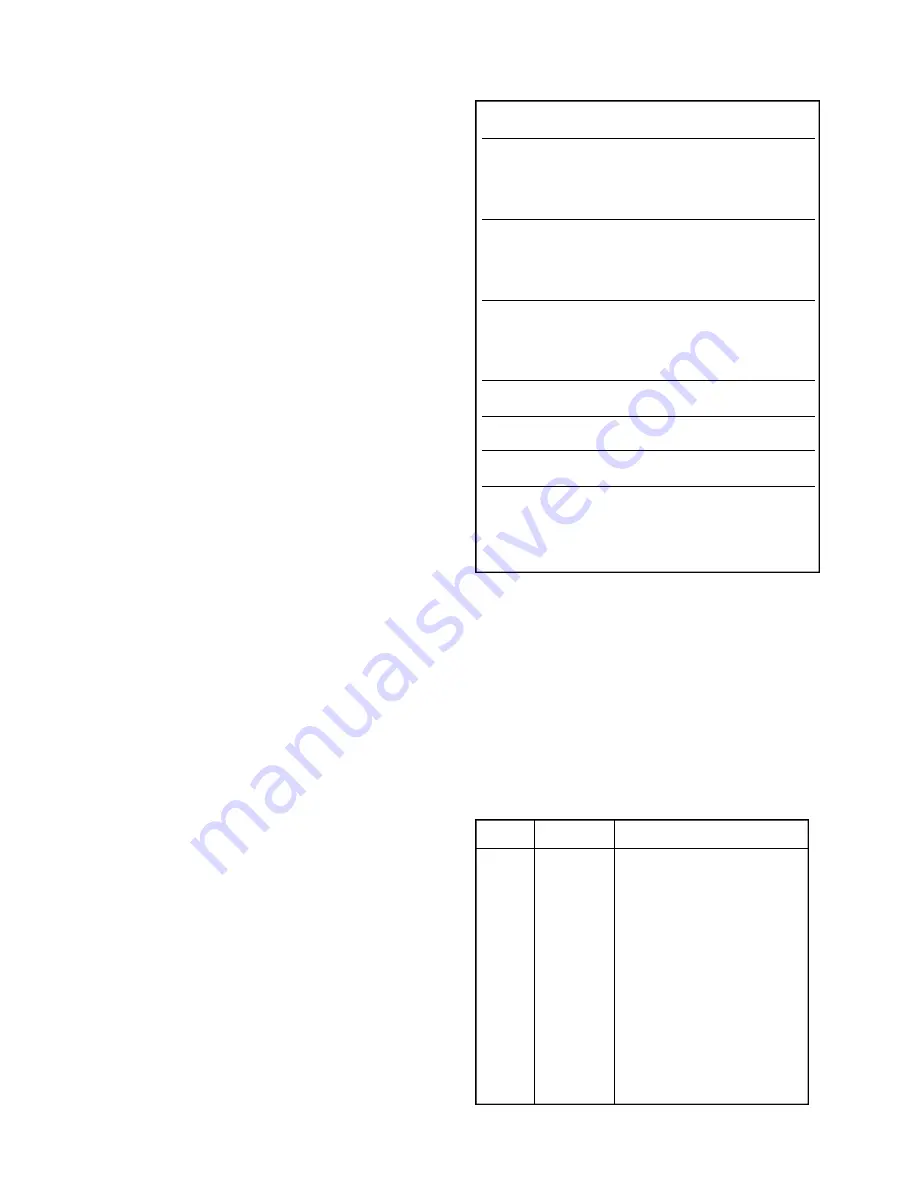
APPENDIX C:
LX200 64,359-OBJECT LIBRARY
The LX200 64,359-object library is a collection of the most
studied and wonderful objects in the sky. The library includes:
• 15,928 S AO (Smithsonian Astrophysical Observatory)
Catalog of Stars: all stars brighter than 7th magnitude.
• 12,921 UGC (Uppsala General Catalog) Galaxies: complete
catalog.
• 7,840 NGC (New General Catalog) objects: complete catalog.
• 5,386 IC (Index Catalog) objects: complete catalog.
• 21,815 GCVS (General Catalog of Variable Stars) objects:
complete catalog.
• 351 alignment stars: LX200 alignment stars.
• 110 M (Messier) objects: complete catalog.
• 8 major planets, from Mercury to Pluto.
Page 33 lists 278 of the best NGC objects. These are most of the
best objects in the sky; they make good first targets. Page 40
lists the 250 brightest stars and 100 double stars. Page 46
presents the complete Messier list.
Access these databases through the M, STAR, and CNGC keys.
•
The M key accesses the M object database.
•
The STAR key accesses the SAO, STAR, GCVS, and planet
databases.
•
The CNGC key accesses the UGC, NGC, and IC databases.
When you press the STAR or CNGC key, the display shows
which database is currently active. You can enter the object
number for that database or press ENTER to bring up the menu
to change databases. The LX200 remembers which database
you used last.
Smithsonian Astrophysical Observatory (SAO)
The SAO catalog is the standard star catalog used in astronomy.
It includes all stars brighter than 7th magnitude.
Uppsala General Catalog (UGC)
The UGC of galaxies includes objects as faint as 15th
magnitude.
CNGC Catalog
The CNGC is enhanced from the RNGC in many ways. It gives
angular sizes in arc-seconds and in a convenient scaled format
on the LX200 display. Magnitudes are given to 0.1 magnitude
where possible.
The coordinates in the CNGC listing are listed for the year 2000.
The LX200 calculates object positions upon power-up to the
current date (as shown on the time/date display). This adds
accuracy to the LX200.
Objects have been assigned a Visual Quality (VQ) Rating. Many
VQs have been obtained by observing the objects. To make the
VQs as useful as possible, all observations have been made with
the same telescope and eyepiece under substantially identical
observing conditions. Only for very small objects was a higher
power eyepiece used. Your VQ rating of a particular object will
vary, largely due to sky conditions.
If the object has been rated by observation, an upper-case
character (ABCDEFG) is used for the VQ on the CNGC listing. If
the object has not been observed, the VQ has been estimated by
a computer program from the object type, size, and brightness
and the VQ is specified in lower-case characters (abcdefg). The
VQs for visually-rated objects provide a considerably more
consistent guide to observability and appearance than either the
computed VQs or an examination of the type, magnitude, and
size data.
The following guide to VQs was used in the visual observation
process:
All, or nearly all, of the objects in the CNGC are visible with
standard instrumentation and observing conditions used to
obtain the visual quality ratings. It is a good indication of what
to expect with similar equipment by experienced deep-sky
observers in excellent conditions. Naturally smaller telescopes
and/or less optimal observing conditions will lower the apparent
quality of all objects.
The following is a description of the format of the optional
CNGC listing for each object:
SUPER
Very bright object with very interesting
shape or structure.
Bright object with very interesting shape or
structure.
EXCEL
OR
Very
bright
object
with
moderately
interesting shape or structure.
Bright object with moderately interesting
shape or structure.
V GOOD
OR
Very bright object with little or no interesting
shape or structure.
Easy to see without averted vision with
some interesting shape or structure.
GOOD
OR
Bright object, but little or no interesting
shape or structure.
FAIR
Easy to see without averted vision, but little
or no interesting shape or structure.
POOR
Easy to see with averted vision. Often
borderline visible without averted vision.
V POOR
A struggle to see with careful use of averted
vision.
Not yet rated AND missing information for
computer estimate.
(none)
OR
Could not see despite careful use of averted
vision.
COLUMN
NAME
DESCRIPTION
1
CNGC #
CNGC 0001 - CNGC 7840
2
RA
Right Ascension
3
DEC
Declination
4
SIZE
Size of object (arc-seconds)
5
MAG
Magnitude (-5.5 through 19.9)
6
TYPE
Type of object
7
*
* object is not in the RNGC
8
ALT CAT
Alternate catalog name & number
9
VQ
Visual Quality Rating
(abcdefg ) or (ABCDEFG)
10
TAGS
Object Type # (0-F):
S = Sky-Cat : T = Tirion
11
COMMENTS
Name, comments, other info







































